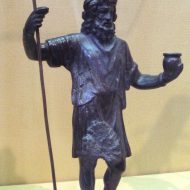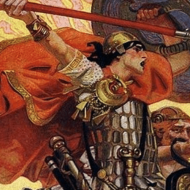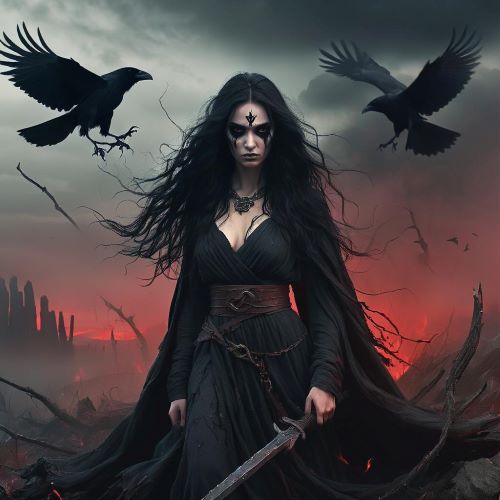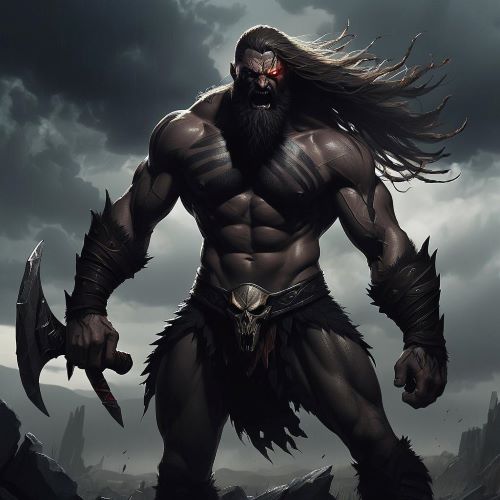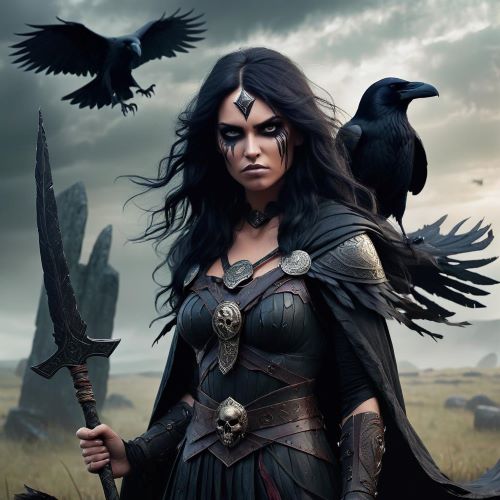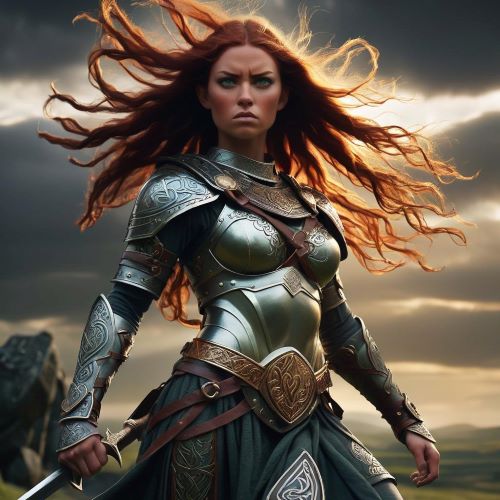Neit : God of War
Listen
At a glance
| Description | |
|---|---|
| Origin | Celtic Mythology |
| Classification | Gods |
| Family Members | Neiman, Badb (Wives), Balor (Grandson) |
| Region | Ireland, Northern Ireland |
| Associated With | War |
Neit
Introduction
In Irish mythology, Neit was revered as a god of war. He belonged to the Tuatha Dé Dannan, a group deeply entwined with Celtic customs. A similar deity, Neto, held significant stature among the continental Celts. Regrettably, Neit was counted among the casualties of the Second Battle of Mag Tuiread, the pivotal conflict that secured the pantheon’s dominance in Ireland. His narrative intertwined closely with the Fomorians, their adversaries in this historic war. Many central figures in this saga bore connections to both sides, either through lineage or alliances.
The Tuatha Dé Dannan and Fomorians often symbolized the clash between the Celts and the indigenous inhabitants upon their arrival in Ireland. Mythology indicates that while conflicts arose, unions were also forged, and loyalties shifted. Thus, figures like Neit emerged in the lore—rooted in Celtic heritage, yet intimately linked to the Fomorians. These Celtic deities were often supplanted by those who better encapsulated the amalgamation of influences that ultimately birthed Ireland’s distinctive Gaelic culture.
Physical Traits
In Irish mythology, Neit is not extensively described in terms of physical attributes or appearance. Many Celtic deities, including Neit, lack detailed physical descriptions in the surviving texts and sources. Instead, much of the focus is on their roles, associations, and stories. Given his role in war, he might be imagined as a powerful and imposing figure, but the specific physical details are left to artistic and creative interpretation, as no detailed physical descriptions of Neit exist in the available sources.
Family
He held the position of being the uncle to the Dagda, who served as the leader of the Tuatha Dé Dannan, the supernatural forebearers of the Irish populace. Furthermore, Neit was the spouse of the Morrigan, a triple goddess associated with war, destiny, and mortality. Neit’s family was a diverse one, encompassing several sons, some of whom aligned with the Fomorians, longstanding rivals of the Tuatha Dé Dannan. This intricate family dynamic symbolizes the intricate tapestry of Celtic and indigenous influences woven into Irish culture.
However, Neit’s story took a tragic turn as he met his demise during the Second Battle of Mag Tuired, a pivotal conflict where the Tuatha Dé Dannan emerged victorious over the Fomorians, solidifying their dominion over Ireland. This tale serves as a testament to the multifaceted nature of Irish mythology and its reflection of the amalgamation of cultural influences in Ireland’s rich heritage.
Other names
The name likely originates from the proto-Celtic term *nei-t-, which signifies combat or intense emotion. A deity with a similar name is documented in two Celtiberian inscriptions, appearing as the Romanized Mars Neto and as Neito.
Powers and Abilities
In Irish mythology, Neit is primarily revered as a god of war, and his powers and abilities are chiefly associated with martial prowess and conflict. He is depicted as a masterful warrior, possessing unparalleled combat skills and strategic acumen, making him a formidable leader on the battlefield. Neit’s leadership abilities are often highlighted, as he inspires and guides armies to victory with charismatic authority. Additionally, his connection to the Morrigan, the triple goddess of fate and death, suggests a potential influence over the outcomes of battles and the destiny of warriors.
Furthermore, like many mythological beings, Neit may possess the power of transformation, enabling him to assume different forms for various purposes. While the specifics of his abilities may vary in different interpretations, Neit’s role as a god of war underscores his significance in the realm of battle and conflict within Irish mythology.
Modern Day Influence
In regions with Celtic heritage, cultural festivals occasionally pay homage to the rich tapestry of folklore and mythology. While Neit’s role may be relatively minor, these events help preserve and celebrate the stories of Celtic deities. In literature, even if Neit is not a household name, certain contemporary works that explore Celtic themes and mythology may subtly reference lesser-known deities like him to add depth and authenticity to their narratives.
Related Images
Frequently Asked Questions
What is lorem Ipsum?
I am text block. Click edit button to change this text. Lorem ipsum dolor sit amet, consectetur adipiscing elit. Ut elit tellus, luctus nec ullamcorper mattis, pulvinar dapibus leo.
What is lorem Ipsum?
I am text block. Click edit button to change this text. Lorem ipsum dolor sit amet, consectetur adipiscing elit. Ut elit tellus, luctus nec ullamcorper mattis, pulvinar dapibus leo.
What is lorem Ipsum?
I am text block. Click edit button to change this text. Lorem ipsum dolor sit amet, consectetur adipiscing elit. Ut elit tellus, luctus nec ullamcorper mattis, pulvinar dapibus leo.
What is lorem Ipsum?
I am text block. Click edit button to change this text. Lorem ipsum dolor sit amet, consectetur adipiscing elit. Ut elit tellus, luctus nec ullamcorper mattis, pulvinar dapibus leo.
What is lorem Ipsum?
I am text block. Click edit button to change this text. Lorem ipsum dolor sit amet, consectetur adipiscing elit. Ut elit tellus, luctus nec ullamcorper mattis, pulvinar dapibus leo.

